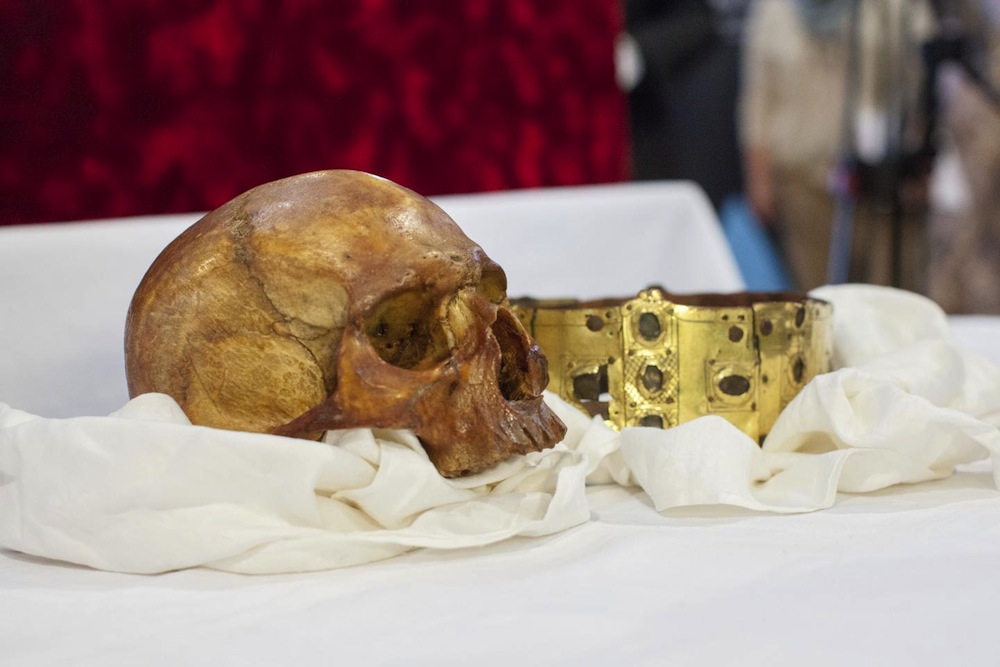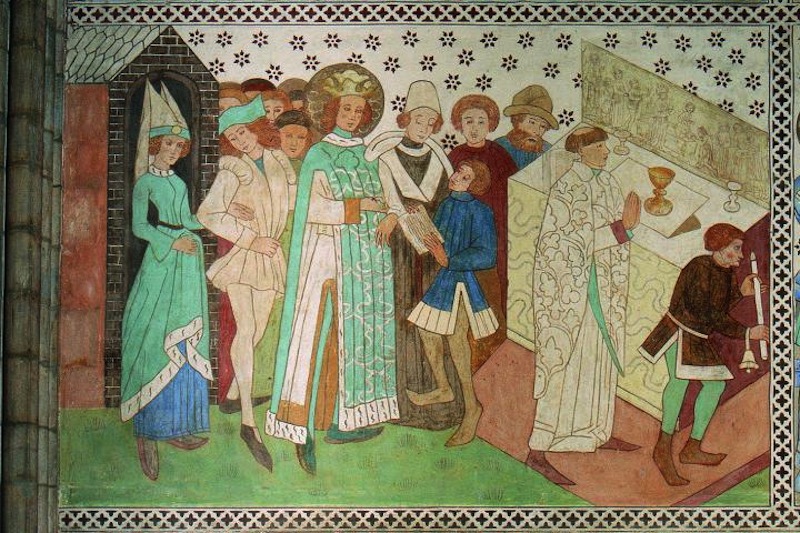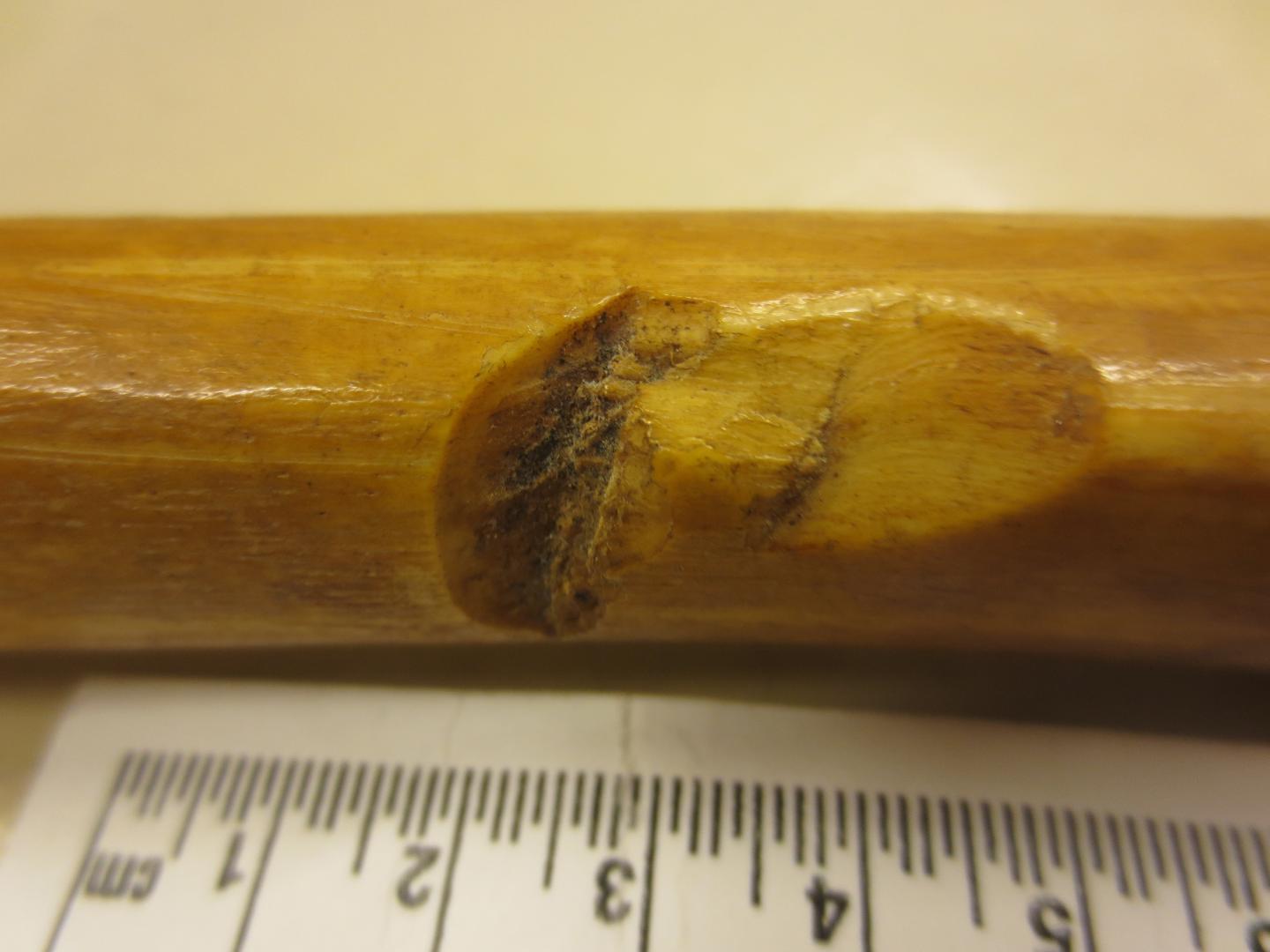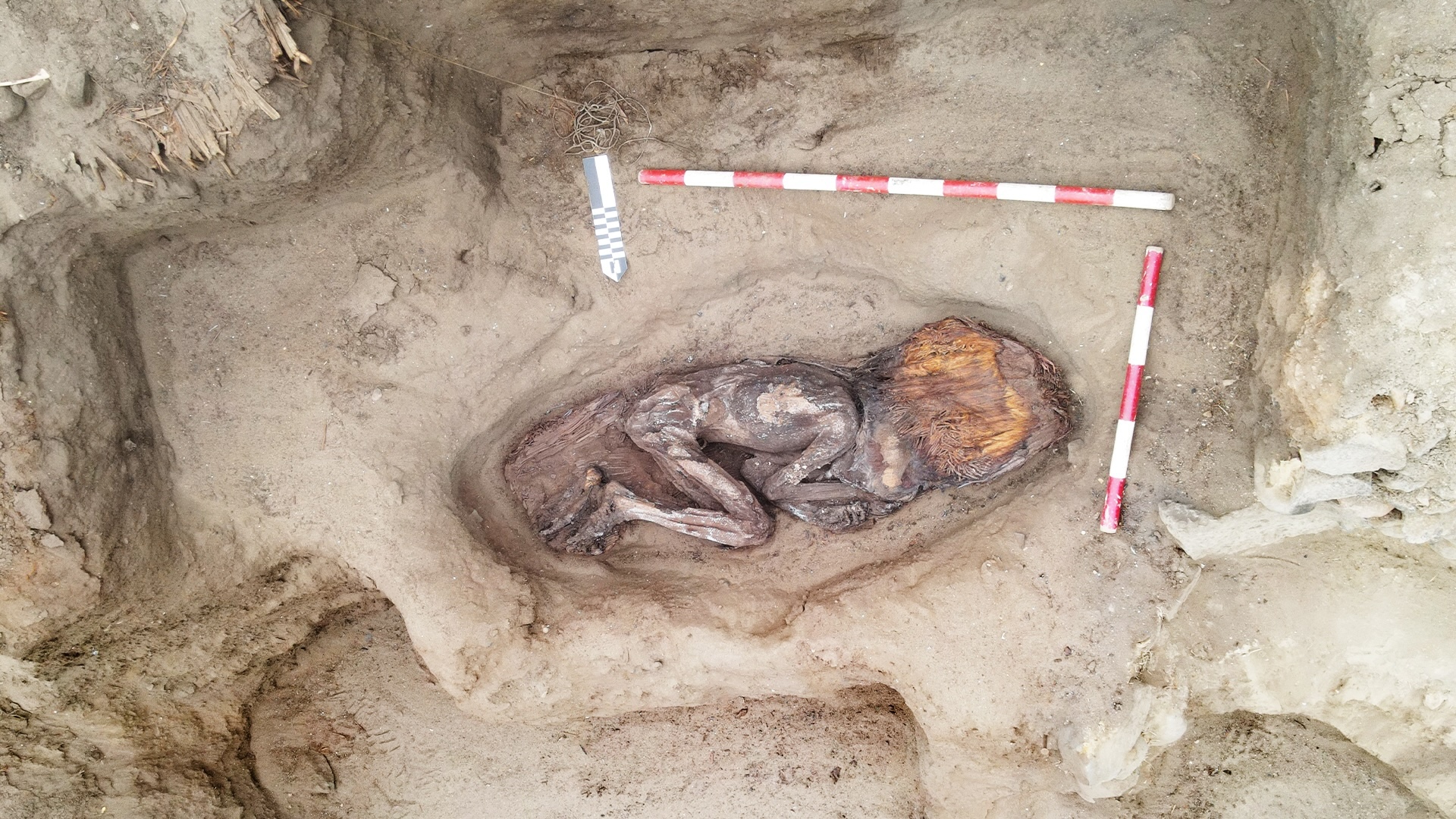Relic of Beheaded Medieval Swedish King Might Be Authentic

To open a medieval reliquary containing a saint's bones, you have to have a good reason, said Sabine Sten.
Sten is an osteoarchaeologist (a type of scientist who studiesskeletal remains from archaeological sites) at Uppsala University in Sweden. Two years ago, she got permission to open a reliquary (a container used to hold objects deemed holy) at the Uppsala Cathedral, to study the bones of Erik Jedvardsson, a medieval Swedish king turned saint.
"We have analyzed thousands of individuals from the medieval period in Sweden, but the people we lack resources from [are] the people like Erik, who have high status," Sten told Live Science. The bones hadn't been examined since 1946—before the rise of radiocarbon dating and DNA tests. After a new analysis, Sten and her team announced that Erik's remains may be authentic, and could reveal more information about his healthy life and gruesome death. [Religious Mysteries: 8 Alleged Relics of Jesus]

For almost as long as Christianity has been around, Christian relics have been objects of worship, but they became increasingly popular in Europe in the Middle Ages. Churches across the continent claimed to have venerable artifacts like the foreskin of Jesus, as well as the nails and cross used in his crucifixion, and the tooth of Mary Magdalene.
Perhaps unsurprisingly, not all holy relics hold up to scientific scrutiny. For instance, a 2010 study in the journal Forensic Science International concluded that the charred relics of Joan of Arc kept in a glass bottle in France were fake (and even included some cat bone fragments). And radiocarbon dating tests showed that the two skulls in a relic shrine in Sweden thought to belong to the 14th century St. Birgitta and her daughter, Katarina, were actually separated by about 200 years —one was much older, and the other much younger, than they should have been.
No historical sources from Erik's lifetime mention him. But according to texts written more than a century later, Erik led the First Swedish Crusade, spreading Christianity to the Finns, until the king was beheaded in 1160 by rebels aligned with a Danish claimant to the throne. Erik became a saint after his death, and his remains have supposedly been kept in a reliquary in Uppsala Cathedral since 1257. They were even left in place after the 16th century Reformation, in which Sweden transformed from a Catholic country into a Protestant one. [Holy Dream Team? The Most Notorious Catholic Saints]

From the reliquary, Sten and her colleagues studied 23 bones, seemingly from the same person. (DNA test results are still pending, which would definitively confirm whether all of these bones belonged to one individual.) The radiocarbon tests, which measure the age of organic materials, were consistent with a death in 1160, the researchers said.
Sign up for the Live Science daily newsletter now
Get the world’s most fascinating discoveries delivered straight to your inbox.
The analysis showed that the bones belonged to a man who died at age 35 to 40. Standing at about 5 feet 6 inches (1.7 meters) tall, he was well fed and well built, with no discernible diseases, the researchers found.
"His body is very healthy," Sten said. Compared with men in their 30s in Sweden today, Erik's bones were much stronger — actually, 25 percent stronger, according to a measurement of his bone density —hinting that he had a very active life.
"We can also see that he was consuming freshwater fish," Sten added, which makes sense considering that, in the 12th century, Christians had to observe more fast[ing] days in which they were not allowed to eat meat from sheep, cattle or pigs.
According to legend, Erik was attacked, tormented and beheaded by his enemies after leaving a church. The bone analysis showed that he suffered seven severe cuts on his legs, and one of his neck vertebra was cut through.
For now, Sten said she and her colleagues are still waiting on the DNA results in order to learn more about Erik's genealogy and whether he was harboring diseases that are invisible to the naked eye.
Their initial findings will be published in an upcoming issue of the Swedish journal Fornvännen.
Follow us @livescience, Facebook & Google+. Original article on Live Science.











